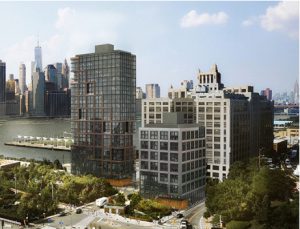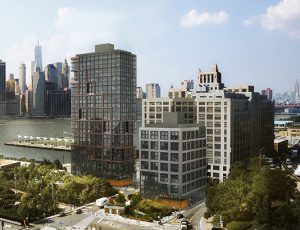
Brooklyn Heights Association’s Pier 6 lawsuit to stay in Manhattan
Judge urges a settlement, castigates attorneys for burying her in paperwork

Such a change of venue is “not consistent with the law. I’d be reversed in a moment,” she told the park corporation’s attorneys, who subsequently withdrew the motion.
She also lambasted attorneys for burying her in a blizzard of paperwork.
“I have a half inch of correspondence here. I don’t have time to read letters,” she told roughly a dozen lawyers representing the battling parties. “I did read them, but it’s pretty much academic by now,” she said. “Who authorized a 100-page memorandum? It makes your arguments look weak and it’s a turn off. What’s the purpose of all these affirmations?”
“Maybe they have time to read this in Brooklyn but there’s no time in Manhattan for anything repetitive,” she said, eliciting “ouches” from observers in the gallery.
Attorneys representing the park said that the park corporation board had determined that income from the entire Pier 6 development was needed to fund the park, and that any compromise would need board approval.
An agreement with the city codified in the General Project Plan (GPP) states that real estate development at the park would be limited to only the amount necessary to fund the park’s financial needs. BHA says that the park, the state and Pier 6 developers continue to act “in defiance of law” by authorizing development that is financially unnecessary.
“Do they really need as much revenue as they say they do?” Ziegler asked the court. He said that real estate taxes have increased dramatically, thus bringing in more income than the park projected, and claimed that the park corporation hadn’t made a case showing financial need for the Pier 6 development.
He also refuted the park corporation’s charge that the community was actually opposed to putting affordable housing in the park. (Roughly 100 of the proposed units would be affordable.) The community began fighting unnecessary development in 2005, “long before affordable housing was a factor in the project,” he said.
The conference concluded, however, with no settlement in sight.
Calling the proceedings back to order, Billings pushed Ziegler to provide the statutes, legal provisions or mandatory obligations the case rested on and to defend BHA’s standing under various regulations. Among other statues, Ziegler listed the NYC Administrative Code, which requires developers (in this case ODA-RAL Development Services and Oliver’s Realty Group ) to register with the City’s Doing Business database.
Individuals listed in the Doing Business Database are subject to lower limits on campaign contributions to city officials.
In between the park’s selection of RAL and Oliver’s in March 2015 and the public announcement three months later of their selection, BHA says in court paperwork that, “RAL and its lobbyist each contributed $10,000 to Campaign for One New York, a controversial fundraising vehicle that supports the political agenda of Mayor de Blasio and that is now under state investigation.”
Attorneys for the park corporation, however, told the judge they didn’t concede that point, saying, among other reasons, that RAL submitted its form on July 21, 2014. Ziegler responded that the form “didn’t find it’s way into the data base until March 2016, indicating a problem.”
“I hope the time we spent working on a resolution here was worthwhile,” she told attorneys.
Leave a Comment
Leave a Comment

Brooklyn Heights
View MoreRead the Brooklyn Height's Press and Cobble Hill News. Find out more about Brooklyn Height's History here.


